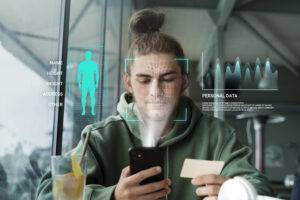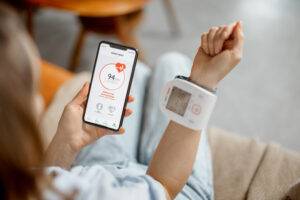BackgroundPanic disorder (PD) is a disabling anxiety condition in which early improvement during treatment can predict better long-term outcomes.ObjectivesThis study investigated whether a newly developed virtual reality-based assessment tool, the Virtual Reality Assessment of Panic Disorder (VRA-PD), can help predict early treatment response in individuals with PD.MethodsIn total, 52 participants, including 25 patients diagnosed with PD and 27 healthy individuals, were evaluated every 2 months over a 6-month period. Assessments included self-reported anxiety levels and heart rate variability measured during virtual reality scenarios, as well as standard clinical questionnaires. Patients with PD were further categorized based on their treatment progress into early responders (n = 7) and delayed responders (n = 18). A machine-learning model (CatBoost) was used to classify participants into early responder, delayed responder, and healthy control groups.ResultsThe model that combined virtual reality-based and conventional clinical data achieved higher accuracy (85%) and F1-score (0.71) than models using only clinical (accuracy: 77%, F1-score: 0.56) or only virtual reality data (accuracy: 75%, F1-score: 0.64). The most important predictors included anxiety levels during virtual scenarios, heart rate variability metrics, and scores from clinical scales such as the Panic Disorder Severity Scale and Anxiety Sensitivity Index.ConclusionsThis study highlights the value of virtual reality-based assessments for predicting early treatment outcomes in PD. By providing ecologically valid and individualized measures, virtual reality may enhance clinical decision-making and support personalized mental healthcare.
The INTERconNEcT-EDs app-based self-help program for people with eating disorders: a usability and qualitative study
IntroductionMobile applications for eating disorders (EDs) offer flexible, cost-effective delivery of evidence-based interventions. Nevertheless, challenges persist in terms of user engagement and compliance. The INTERconNEcT-EDs



